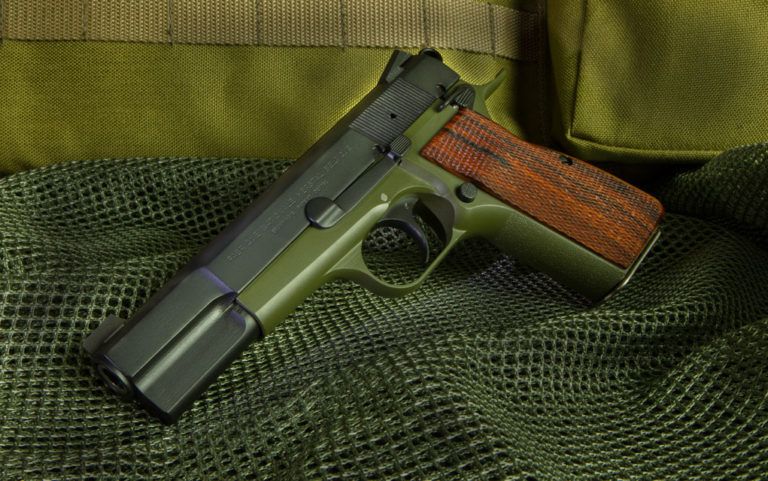
These are the seven 9mm pistol designs that propelled the demure German cartridge's popularity worldwide.
What are the most influential 9mm pistol designs?
There’s no escaping the 9mm. Like the air we breathe, in the shooting world the potent little German cartridge is everywhere at once — pistols, revolvers, carbines. Not that this is a bad thing.
Yes, it’s as common as road dirt nowadays, but there’s a reason why the “Nine” has risen to become not only America’s favorite centerfire cartridge, but a world phenomenon. It plain gets the job done. A rarity in the semi-automatic pistol world, the 9mm presents shooters with few tradeoffs. It’s small enough to enhance capacity. It’s powerful enough to excel in military, law-enforcement and self-defense roles. It’s mild enough that nearly anyone who desires to shoot a handgun can master it. It’s economical enough you can keep a pistol well fed. And it’s flexible enough it’s reinvented itself numerous times over its life, always remaining relevant.
Certainly, the 9mm isn’t an absolute do-all. If you have a yen for handgun hunting anything more substantial than a woodchuck the cartridge will come up short. But for the main applications of a handgun — defense, competition, plinking — it occupies an amazingly large middle ground. A ground no other cartridge really comes close to encroaching upon.
Load Up On 9mm Ammo Knowledge:
- How to Choose the Best 9mm Ammo for Home-Defense
- Best Caliber for Self-Defense – 9mm, .40 S&W or .45 ACP?
- Medium-Bore Comparison: .38 Special vs 9mm
Though, for the sake of fairness, the cartridge doesn’t get to steal the laurels all by its lonesome. Over the years, gun designers have hatched truly classic shooting irons to launch the 9x19mm, pistols that — in some cases — are equal of any other legendary handgun to come down the pike. From armor-plate tough military sidearms to space-aged innovation, the 9mm pistol has evolved more than perhaps any other caliber of handgun in the past 100-plus years. That is especially true of the pistols we’ll look at now.
When it comes to the 9mm pistol, these are the best of the best. They represent not only watershed moments in gun design, but also in handgun application as well as shooters tastes. And if you love the Luger, Parabellum or whatever you might call it, these are must-haves for your collection — if you have a wallet thick enough to afford them.
Luger P08
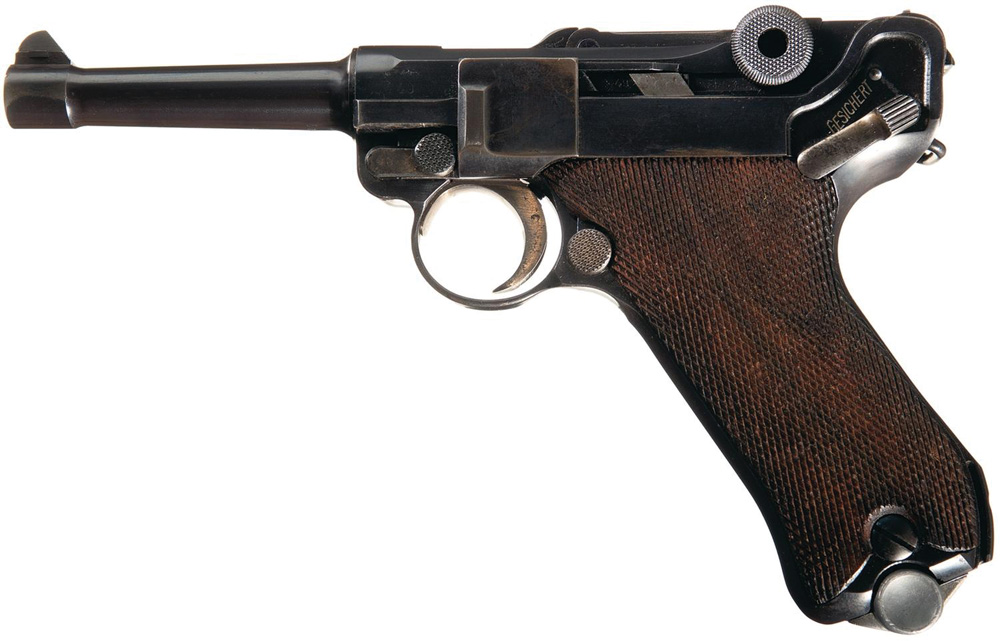
The gun for which the 9mm was developed, the wicked toggle-lock pistol is among the most sought-after and iconic handguns of the 20th Century. Routinely, choice Lugers can flirt with six figures, such as a prototype “Baby” Luger that sold at Rock Island Auction Company for $92,000 in 2017. Yet, the 8-round pistol generally doesn’t occupy the mind as a moldy dust gatherer. Adopted by the German military in 1904, debatably the first successful semi-automatic pistol served in World War I and II and is remembered as the dynamic sidearm of the enemy and coveted war booty for Allied soldiers.
Soldier or not, who wouldn’t want this extraordinary 9mm pistol? The action alone is worth the price of entry. It was plenty effective too boot, capable of expectorating hot 9mm rounds quicker than you can yell, “Achtung!” And, given its fix barrel, the handgun was inherently accurate — considered by some to be among the most natural pointing pistols ever conceived. The design suffered from some issues. The Luger is ammunition sensitive, struggling to cycle low-pressure rounds. Tightly fitted, it also was expensive to manufacture and it could get testy if not kept clean as a whistle. The last is not a great trait of a service pistol.
Nevertheless, the Luger held its own in two of the greatest conflicts the world’s ever known and continues to stir the imagination today.
Walther P38
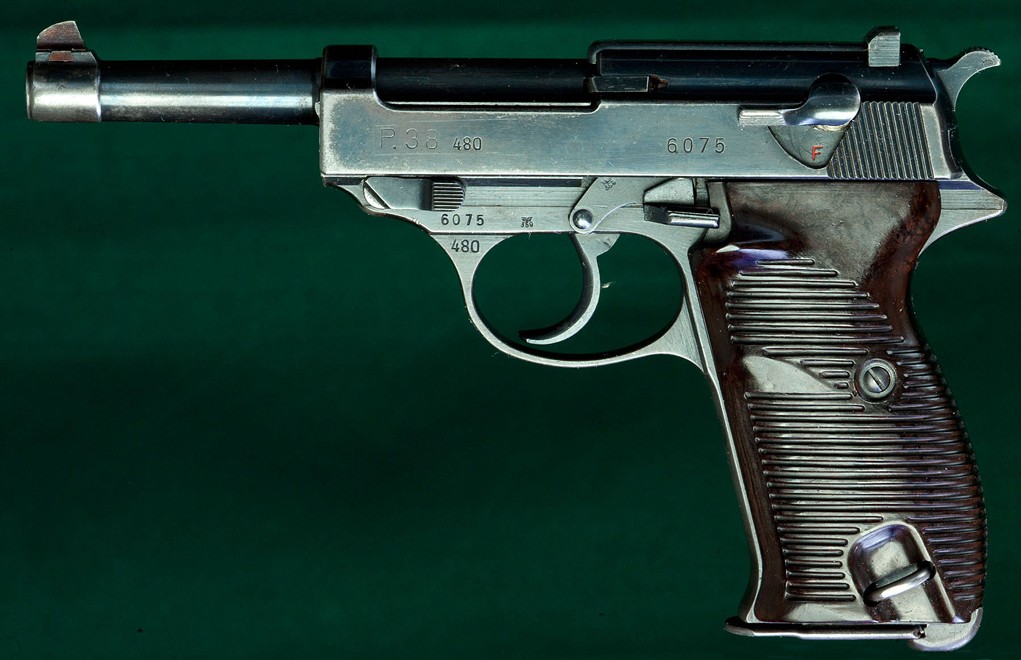
Overshadowed by the Luger, the P38 doesn’t quite rouse the soul in the same way. Yet, it’s fair to say the semi-automatic 9mm pistol held a more significant position in the world of gun design than the P08, at least in the modern era. Marking a trend in service pistols from the midpoint of the 20th Century on, it was the first to mate the locking breech with a DA/SA trigger. Furthermore, it was also the first handgun with a loaded-chamber indicator — nearly an industry standard now.
Introduced in 1938 and mass produced in 1940, the 8-round pistol’s ruggedness and reliability endeared it to soldiers. That, and of course, its accuracy. This aspect was hastened by a barrel that always remained horizontally aligned to the target when cycling, instead of tilting like the 1911.
Born out of the need for an easy-to-manufacture and economical pistol, the P38 still contained some downright clever engineering. In particular, the wedge-shaped falling block that kept the slide and barrel locked until chamber pressure dissipated to enough to allow the slide to travel fully backward. The design proved resilient, with the pistol not only seeing action in World War II, but also as the German military sidearm from the mid-1950s to the mid-1990s.
Sadly, Walther ceased production of the P38 in 2000. Though, there are plenty of affordable specimens floating around for the shooter who must have one in their collection.
Browning Hi Power
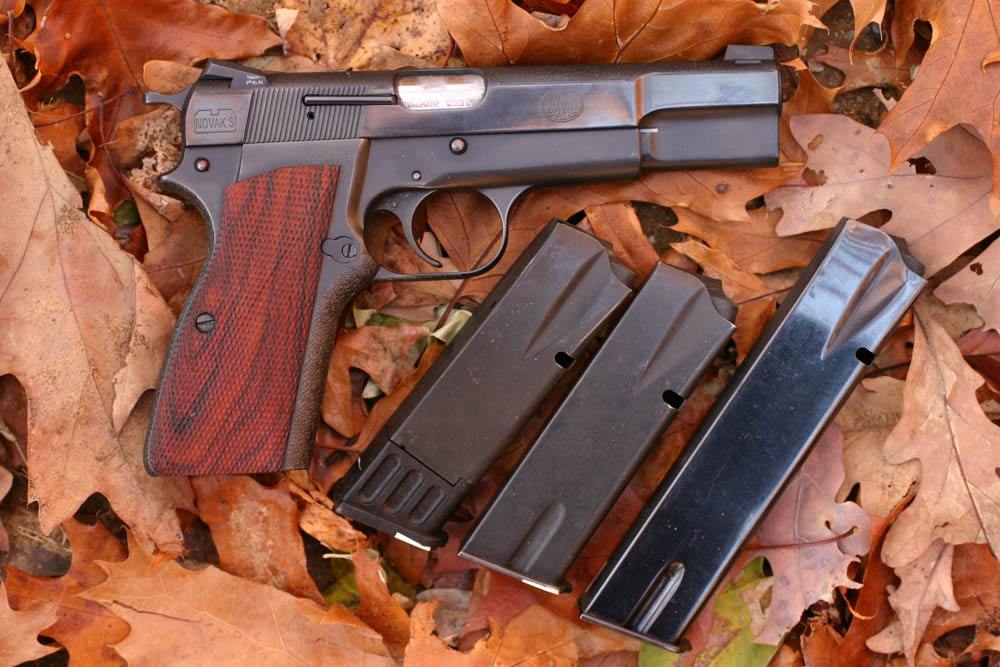
A melancholy addition to the list, given the pistol’s inauspicious end earlier this year. After more than 80-years of production, Browning (but manufactured by Fabrique Nationale) quietly added to the Hi Power’s webpage “No Longer In Production.” Not exactly the adieu one of the 20th Century’s most important and prolific pistols deserved, to say the least. Though, understandable, given so many modern striker-fired pistols offer the advantages of the Hi Power, at a fraction of the weight and price.
Therein lies one of the great contributions of the John M. Browning started, Dieudonné Saive finished design — it laid the groundwork for much of what today makes up the modern pistol market. In particular, capacity and linkless cam locking system. The latter was all Browning, who had to find a way to work around the 1911’s toggle link, which Colt held the patent on. The former was a Saive’s contribution, originally a 15-round magazine in the staggered configuration so familiar today.
Read More: Eulogy to the Browning Hi Power?
The Hi Power as known currently, for the most part, was due to Saive. After the Browning’s death in 1926 and the Hi Power’s failed attempt at becoming the French military’s sidearm, the FN designer continued tinkering with the 9mm pistol. He replaced the striker-fired mechanism with a single-action external hammer, added a manual thumb safety, curved the backstrap and trimmed the capacity to 13-rounds to lighten it a hair. While the French did not adopt the pistol they turned out to be the exception. More than 50 militaries worldwide utilized the Hi Power, making it one of the most ubiquitous military pistols of all time.
Though the Hi Power’s time finally came this year, it won’t be soon forgotten. Honestly, it can’t be, with how many pistols followed its lead.
Heckler & Koch VP70
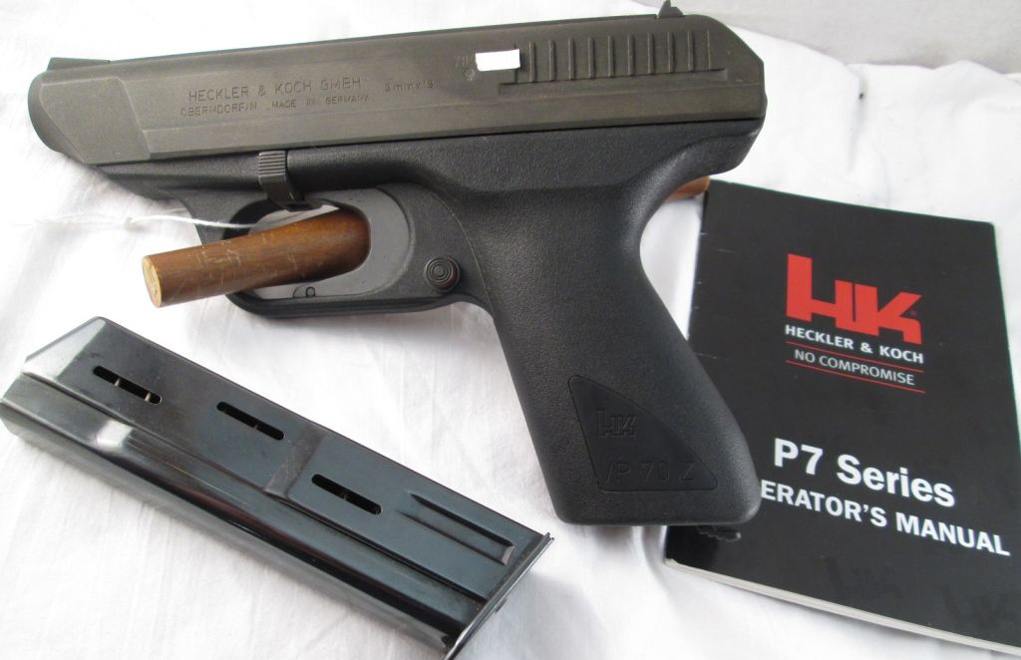
An ugly duckling to be sure, the VP70 arguably is among the most important pistols of the late 20th Century. The first (of many) handguns to utilize a polymer frame, the German 9mm, in essence, launched the materials revolution that defines the pistol market today. Innovative as it was, the pistol proved somewhat ahead of its time, as it took until the 1980s and the rise of Glock for the concept to really catch fire.
Introduced in 1970, the 9mm pistol’s design was as simple as kindergarten arithmetic. A blow-back operation, the striker-fired had a relatively clunky slide encasing a fixed barrel, which should have made it accurate, though this was thwarted somewhat by a less-than-smooth trigger. Downright stiff, the double-action-only trigger made it feel more like shooting a 9mm revolver than a 9mm pistol. Though, if you knew the gun, you could stage the trigger like a wheelgun, thus break an aimed shot without all the travel.
On the plus side and similar to most blowback pistols, the VP70 digested nearly anything it was fed and was dependable as daybreak. Additionally, it boasted an ample 18-round capacity, which at the time must have seemed like you could shoot the thing all day off a single magazine.
In addition to its polymer frame, the pistol had a few other interesting facets, especially for its day. Originally, the VP70 was a machine pistol (not the civilian model VP70Z) designed for the military that, with the addition of a stock, would shoot 3-round bursts. Furthermore, it had a unique front sight. Instead of a traditional blade, a notched ramp provided the front post, casting a shadow over where it had been slotted.
The VP70 isn’t the first pistol shooters would pick in a beauty contest, nevertheless, its cutting-edge use of material more than proved an attractive concept that gunmakers swarmed to as the years wore on.
Beretta 92
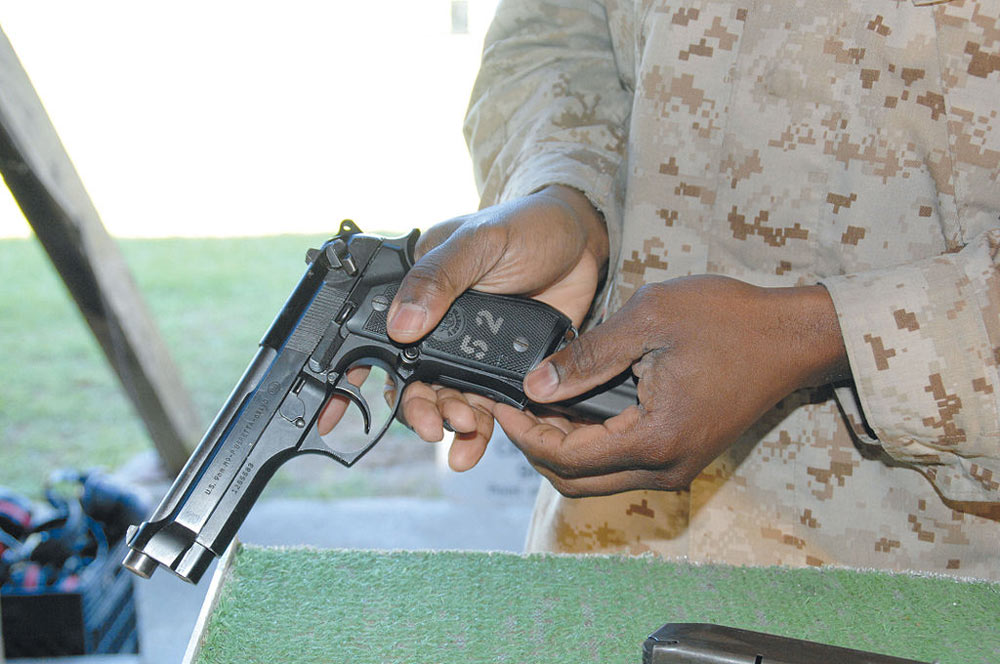
To say the least, this unique DA/SA draws mixed reactions. Partly due to replacing the M1911 as the U.S. military service pistol, partly due early design flaws (a whole other article), the 92 tends to raise some shooters’ dander. But, overall the first 9mm pistol to the serve the country had a fairly solid track record over its recently-ended 23-year career.
While many remember the M9 (its military designation) taking the place of John M. Browning’s masterwork, it actually cut a wider swath across the armed services. In all, it replaced some 25 pistols and revolvers — not to mention all the ammunition to feed them – that had wormed their way into service by 1985. Given 9mm was the NATO standard, it was logical as a member of the treaty the U.S. would follow suit with its new pistol. This, more than the fact it replaced the 1911, probably got most folks upset. The 9mm is smashing when shooting defensive rounds, but many felt it left a lot to desire spitting ball.
Read More: The Beretta 92 Centennial Edition
Designed in 1972, the unique handgun was based off a different Beretta service pistol — the single-action 951. Like the older 9mm pistol, the 92 employed the Walther P38’s locking block barrel design, which increased its accuracy potential by keeping the barrel situated on the target after it fired. Furthermore, it had kept one of the most distinguishing features of its predecessor — an open slide design with an exposed barrel. Though, it was also influenced by the “Wonder Nine” movement of the time, with a 15-round double-stack magazine and, of course, the DA/SA trigger.
Loved and hated, the 92 is controversial, at least in some military circles. But taking the U.S. military’s sidearms in a whole new direction for the first time in 70 years makes it as influential as ever.
CZ 75
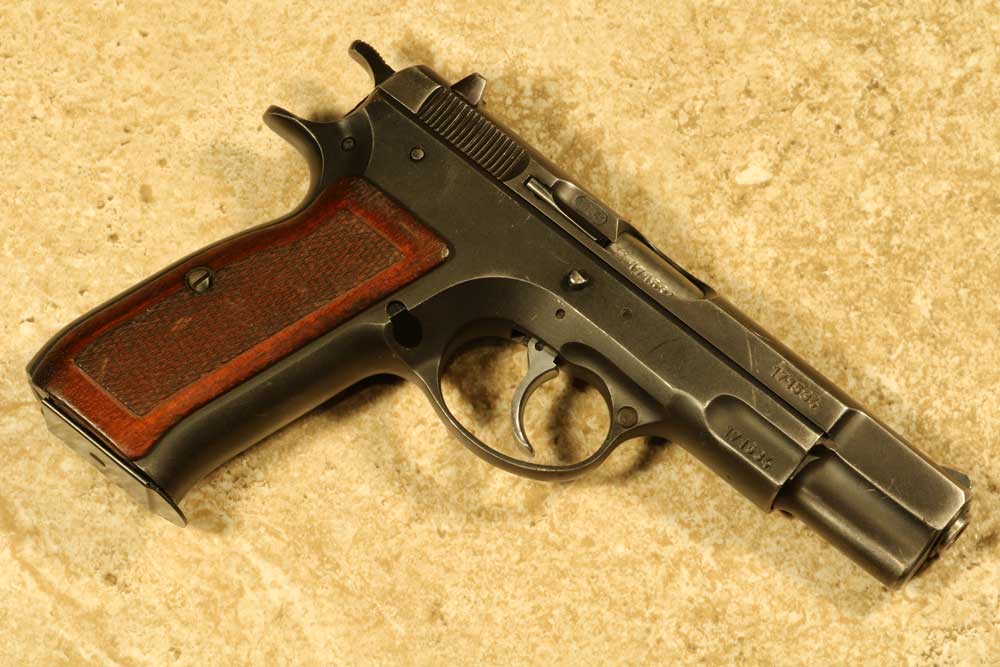
The term “Wonder Nine” has lost some of its luster over the years, but in the 1970s, when law enforcement by and large still carried .38 Special revolvers, the title had meaning. And few optimized it more than the CZ 75. The little wonder from behind the Iron Curtain had nearly everything shooters were looking for out of a modern 9mm pistol at the time and even now.
Well, the DA/SA trigger is up for debate, it’s never gained the level of popularity akin to striker-fired options or single-action only semi-autos. That said, it was and is one of the best examples of this style of trigger, smooth on the first squeeze and curt every one that followed. Additionally, it was fully capable of being carried in condition 1 (cocked and locked), which made the 9mm pistol a favorite among the competitors. Nice as its trigger is, hands down the showstopper was its 15-round capacity, which in its early days made it the Henry Rifle of handguns — “Loaded on Sunday and shot all week.”
Read More: The Venerable CZ Flagship – CZ-75
Born in Czechoslovakia, the gun was never meant to arm the Communist Block. It was purely an export to the Western World and was a hit in Europe when it made its appearance in 1975. The U.S. was another story. Due to harsh duties on Czechoslovakia at the time, the gun was an anomaly when it showed up stateside. In fact, the first one to appear was actually a licensed model made by Fratelli Tanfoglio (TZ-75) in the early 1980s.
The Italian manufacturer wasn’t the last to slap their roll mark on the CZ 75. Given the inability of brothers Josef and František Koucký to secure world patents on the design, the 9mm is among the most cloned and outright copied pistols in the world. From the Magnum Research’s Baby Desert Eagle to Kriss Arms Spinks, all are derivatives of the Eastern European masterpiece.
Glock 17
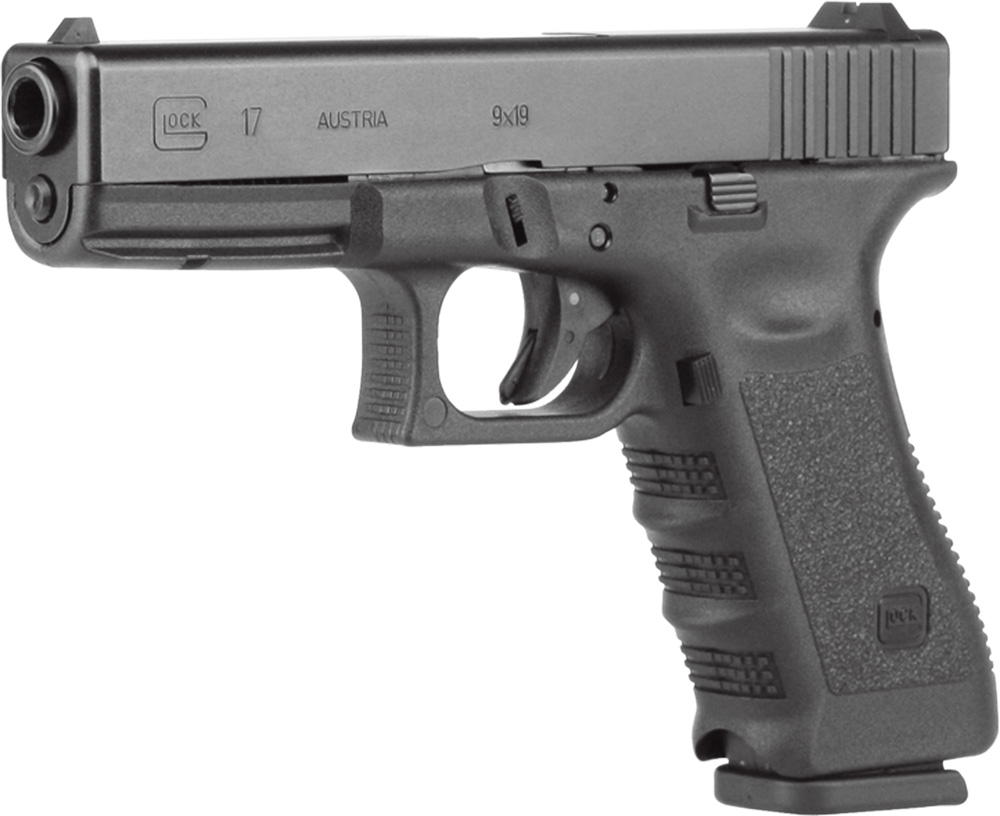
The Glock 17 wasn’t the first polymer-framed pistol to amble on the market (see the VP70), but no bones about it, it was the first successful one. Though truth be told, success misses the mark. The 9mm pistol, initially designed for the Austrian military, went way beyond that redefining the handgun market from the early 1980s on.
The Glock 17’s impact is undeniable, sparking today’s incredible selection of polymer-framed pistols. Nearly every major manufacturer offers at least one line of the style of handgun and, by and large, they are the choice of most armed citizens, particularly those who carry concealed.
The Glock 17’s lightweight, simple design and intuitive shootability made it a global sensation and a near instant classic. And it took what amounts to a wink to accomplish. Gaston Glock assembled a team of European shooting and firearms experts to propose design points. From there, it was a matter of months before the company cranked out a prototype to submit to the military trials. Impressive, given beforehand Glock and his company had no background in firearms.
In addition to materials, the Glock 17’s other revolutionary design point is its trigger. Double-action-only (know as a ‘Safe-Action by Glock) achieved one of the most consistent pulls up to that point. Squeeze in and out, the striker-fired’s trigger broke at a predictable 5.5 pounds — an absolute boon for a shooter’s accuracy potential.
Certainly, there are shooters who bemoan the rise of the plastic fantastics sparked by the G17. They might have a point, the blocky black pistols have all the charm of an indecent proposal. But when your life is on the line, Glock’s unsightly lines are absolutely beautiful.
More 9mm Info
- How to Choose the Best 9mm Ammo for Self Defense
- Could the 9mm Luger be the Best All-Around Defensive Cartridge?
- Our Picks: Top Suppressor Choices for your 9mm
- Top 6 Micro 9mm EDC Handguns

Next Step: Get your FREE Printable Target Pack
Enhance your shooting precision with our 62 MOA Targets, perfect for rifles and handguns. Crafted in collaboration with Storm Tactical for accuracy and versatility.
Subscribe to the Gun Digest email newsletter and get your downloadable target pack sent straight to your inbox. Stay updated with the latest firearms info in the industry.

![Best Concealed Carry Guns In 2025 [Field Tested] Wilson Combat EDC X9S 1](https://gundigest.com/wp-content/uploads/Wilson-Combat-EDC-X9S-1-324x160.jpg)


![Best 9mm Carbine: Affordable PCCs [Tested] Ruger Carbine Shooting](https://gundigest.com/wp-content/uploads/Ruger-Carbine-Shooting-100x70.jpg)
![Best AR-15: Top Options Available Today [Field Tested] Harrington and Richardson PSA XM177E2 feature](https://gundigest.com/wp-content/uploads/Harrington-and-Richardson-PSA-XM177E2-feature-100x70.jpg)

Let me specify for CZ75. The patents were not secured not because of the “incompetence” of the Koucký brothers, but because of the criminal inhuman communist regime in the Czechoslovak Republic!
Luger P08 The beginning, therefore a significant entry in the field.
Walther P38 Brought the 9x19mm cartridge into the realm of the commoner, so to speak.
Browning Hi Power An excellent design and quite innovative. Sort of a modified Government Model without infringing any patents. The magazine safety was demanded by the users more than the designer and the trigger mechanism is far too complicated.
Heckler & Koch VP70 Has significance in construction, but does not have much bearing on the 9×19 cartridge particularly. It could have been made in nearly any handgun caliber and still be meaningful as a construction/production breakthrough. All together, a hideous mess.
Beretta 92 No mention of the Beretta Brigadier? The model 92 is only an updated version of the original Brigadier. Per trendiness, the Brigadier became a double stack magazine vice a single stack (not sure if this was due to the rather ineffective round fired or the inability of the user to hit on demand); the trigger was re-designed as double action for those who cannot or will not operate a manual safety (perhaps the issuing organization?); and the magazine release was moved to provide the illusion of quick reloading. The Brigadier is the pistol worthy of note, if either at all.
CZ 75 Good, solid design in all. Based loosely on the Government Model, it serves adequately. Not much ground breaking about it, other than the reversal of the frame and slide rails. Which is not specific to the 9×19 cartridge.
Glock 17 Another wonder of plastic manufacturing. Not specific to the cartridge. Designed to be used by military contracts and discarded rather than rebuilt. Interesting design concepts, but again unrelated to the cartridge.
Completely missed the S&W Model 39, which was the first U. S. designed/made pistol specifically in 9x19mm. Also the first commercially successful double action American made pistol. Prior to the ‘shoot a lot and hope’ era.
The writer of this article expressed his opinion, but little else. Vlad tepes presents some interesting and worthwhile additional information. I would suggest that he too allows some opinion to creep in, but that’s what comments are for, I suppose. My personal opinion is that such a list should include the S&W Model 39 since it kind of opened the door for law enforcement (US) to start using semi-autos in 9mm. Of course this, like some of the others listed gave way to a whole family of derivative models, and the Model 59 was one that arguably brought the “Wonder Nine” movement to law enforcement. The Beretta 92, CZ 75 and Browning HP all have their shortcomings, but they certainly belong on my “best of” list, again for advancing the breed, but if you want to go historical, you might even have to include the “Red 9” Broomhandles along with the Luger and P-38 for bringing the 9 mm to the world’s attention. JMHO, of course and YMMV!
Again, I think you’re a little too excited. My comment wasn’t an attack on the author, just a clarification. Check out this book”Handguns of the World” by Ezell. Specifically page 431. It will help you understand the production demands of each pistol. Add it to your library, you’ll find yourself referencing this book quite often, it’s informative and at times entertaining. Here’s the ISBN: 0880296186
The title of the article was “The 7 best 9mm designs of all time.
1. The Luger.
This was the absolute worst Military Handgun ever developed. It was totally unreliable even with the original military ammunition. Its troublesome toggle mechanism recoiled to fast and would override the top round in the magazine that was compressed downward under recoil. Its tolerances were to tight causing frequent jams. It was costly and time consuming to make. Its trigger pull was not the best. Its defectively designed bolt was its Achilles heal and would shatter after hitting the frame after high round counts. The only reason so many Nations were fool enough to adopt this turkey of a gun was that they thought everything the Germans designed would naturally be the best available. This was due to the Germans success with the excellent 98 Mauser rifle which gave Germany high standing and admiration in regards to their small arms but alas this was not true of the Luger pistol.
2. The P38. Another failed German design. Its top cover was only held on by friction and would often blow off the top of the slide taking many of its internal parts into the stratosphere never to be seen again. Its defective hammer drop safety would crystallize and let the gun to full auto. It accuracy was very bad and only just acceptable in the more finely made commercial models. The post war gun had a delicate aluminum frame that often cracked its frame rails. It had a very steep feed ramp that prevented it from using most expanding point bullets. Its extractor often blew out of the gun with even mildly warm loads.
3. The CZ 75 suffered from a gritty trigger. It had way to long a trigger reach even for people with extremely long hands. It had a Philips head screw down in the frame that sometimes worked itself loose causing a malfunction. Its tucked in slide made it much more difficult to grasp when pulling the slide back under the pressure of an emergency.
4. The Glock has a very weak ignition system and to make matters even worse it has an open striker channel that lets in dirt, debris, and excess lube. The bottom of the grip has a large hole that lets in clouds of dust which work its way into the open striker channel. Its basic design is totally unsafe because the gun is cocked and an accidental snag of the trigger will accidentally set it off which has resulted in many necessary deaths and crippling. If hand guns fell under the consumer safety council it would never have been allowed on the market. The front dust cover (lower front plastic frame) flexes under recoil and hits the under side of the barrel which is a detriment to accuracy and can in some cases cause a malfunction. The gun will fire out of battery which can cause a catastrophic exposition failure of the weapon. Some of the earlier generation models had defective trigger springs and defective passive firing pin safeties. Some early models had defectively designed frame rails that in the case of the short frame rails let the slide fly off the gun when dropped and in the case of the longer rails caused malfunctions. Early model ported barrels broke off. Early magazines without the button detent often flexed enough in a fall to let the floor plate fly off spilling all the ammo.
4. The High Power had a long history of problems. Early barrels had to be modified as the lower cam surface wore out and broke prematurely. The trigger reset was so long that people when firing fast under pressure would fail to let the trigger come far enough forward to reset which prevented the gun from firing. Grip circumference was too wide for men with small hands and ditto for women. Later cast steel frames were even wider yet making a bad situation ever worse. Later models made after 1989 had a defectively designed passive firing pin safety system which left less than 1/16 of metal under the firing pin stop plate which led to the rear of the slide cracking. Modern “plus P” loads for which the gun was not designed often led to short service life resulting in cracked slides. Many early military slides did not have heat treated locking notches which soon wore out.
5. The VP 70 was a failure back in the day and would still be a failure today. Its heavy trigger which led to poor accuracy made it so unpopular it soon failed in the market place. Its service life was short as well.
The author failed to mention the Polish Radom pistol whose only defect was its telescoping recoil rod which would break under high usage. Its un-heat treated slides locking notches did not last as long as they should have either but it was a very accurate and reliable pistol when in new condition.
The author failed to mention the Astra 400/600 series of pistols that were perhaps the best 9mm pistols of WWII. They were totally reliable, accurate and had superior sights compared to most of the pistols of the era. It was totally world class.
Post WWII the Star Model 30 was by far the worlds best military handgun ever developed. It was built like a tank and totally reliable and had service life as long as 180,000 rounds. Accuracy was superb and so were the sights on the pistol. Trigger pull was superb. It did suffer from a slide tucked in the frame Ala CZ75 which made it more difficult to rack the slide in a hurry but that was about its only defect.
The HK P30S is another great military style pistol and with the manual safety perhaps one of the safest guns to use and carry. You can rack the slide with the safety on and unload it with the safety on. You can carry it with the safety on either at full cock or with the hammer down. It has a decocker as well. It is totally reliable and has a good single action trigger pull.
Maybe your two #4’s should be a sign? But just in case uninformed readers believe what you wrote. Your 1-4’s assessments are odd. The VP70 introduced polymer framed handguns and it worked. If you don’t realize the VP70 was a game changer then you can’t be helped. And the comment about the Hi Power grips makes you lose all credibility instantly. That’s simply absurd, like most of what you wrote.
Switch to decaf, actually shoot some of these weapons, listen to some grateful dead, read some books then come back.
My post was based on over 55 years of tests and evaluations. It may seem odd to you but as you gain experience with handguns you will realize what I wrote was right on the money.
You did miss the point Vlad. The topic was ‘best’ 9mm pistol designs. My understanding suggests “most important”.
You make some valid points in your answer. Many of those designs had flaws, some greater than others and some rather subjective. (I don’t like the feel of the Hi-Power grip, but seem to be in the minority; as a single example.)
For that matter, I am not very taken with the 9x19mm cartridge at all. On that basis, none of them really mean much to me.
Fun article! I would replace the Beretta 92 with the Sig P220 series. The 92 is an extension of the P38 but the Sig lock up changed the game entirely. Most all handguns today lock up ala Sig Sauer breech block system.
Also note that the P38 was not cheaper to mfg than the P08. It was almost the same cost but the advantage was that it could be made quicker.
quote: —————————-Also note that the P38 was not cheaper to mfg than the P08. It was almost the same cost but the advantage was that it could be made quicker.——————–quote
Part of the cost of manufacturing today as well as back in the day was the amount of labor (time) it took to build a pistol. The Luger had 1,400 machining operations as opposed to the 750 machining operations on the P38. And of course there was also the wear and tear on the machines which was far greater when building the Luger and the machines had to be shut down and repaired from time to time, again costing money in labor and repair parts. If you had ever worked in manufacturing and had to order spare machine parts and calculate labor you never would have made the above statement.
Totally agree. Omission of the Sig P models is a bad oversight.